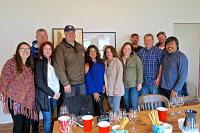 The quality of Lodi wine grapes is not only evident in the excellent wines made by Lodi wineries, but also the wines produced by non-Lodi wineries. One example is Turley Wine Cellars, who largely make single-vineyard designate wines, with several focusing on Lodi old vine Zinfandel & Cinsault. The winery is based in Paso Robles with a second tasting room in Amador and sources fruit from several of Lodi's old vine vineyards such as the Bechthold Vineyard, Kirschenmann Vineyard, Dogtown Vineyard, and Steacy Ranch. During our Snooth-Lodi visit, Turley Director of Winemaking Tegan Passalacqua introduced us to these vineyards through a couple of verticals within a single-vineyard designate and a horizontal across multiple vineyards.
The quality of Lodi wine grapes is not only evident in the excellent wines made by Lodi wineries, but also the wines produced by non-Lodi wineries. One example is Turley Wine Cellars, who largely make single-vineyard designate wines, with several focusing on Lodi old vine Zinfandel & Cinsault. The winery is based in Paso Robles with a second tasting room in Amador and sources fruit from several of Lodi's old vine vineyards such as the Bechthold Vineyard, Kirschenmann Vineyard, Dogtown Vineyard, and Steacy Ranch. During our Snooth-Lodi visit, Turley Director of Winemaking Tegan Passalacqua introduced us to these vineyards through a couple of verticals within a single-vineyard designate and a horizontal across multiple vineyards.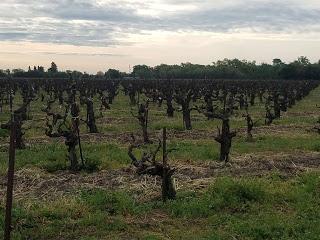
The Bechthold Vineyard
The Bechthold VineyardMuch has been written about the famous Bechthold Vineyard -- not only the oldest continually planted vineyard in Lodi but also in the world. The vineyard was first planted by Joseph Spenker in 1885 as Black Malvoisie. The self-rooted vines are not as susceptible to phylloxera (a root louse that eats away at roots near the surface) because of the extremely sandy soils in the Mokelumne River AVA. That was not the case in Europe where phylloxera ravaged vineyards in the late 19th century until their vines were grafted upon American rootstock. Because the Bechthold grapes were believed to be Black Malvoisie, they carried little interest to commercial winemakers and were instead sold to home winemakers or shipped out of state. Al Bechthold, who farmed the vineyard from the mid-seventies until 2008, claimed "I came very close to pulling the entire vineyard several times… the only thing that kept that from happening was my age!"(1). Fortunately, before he could replant the vineyard, Kay Bogart, from the Department of Viticulture & Enology at U.C. Davis suggested DNA testing and in 2003 UC Davis determined the grapes were Cinsault.
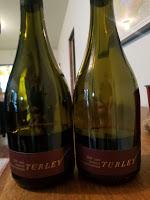
Turley Cinsault Bechthold Vineyard
Turley is one of a half-dozen or so wineries able to source this fruit from Bechthold where they harvest a plot in the mid-section of the vineyard. Passalacqua was attracted to the vineyard because, "..wet years, dry years, early years or late years – there’s nothing an old vineyard like this hasn’t seen and almost nothing that it can’t adjust to on its own. And Bechthold Vineyard defies what a lot of people think of Lodi wines. It makes a red wine that is not heavy, not high in alcohol, but rather, light and refreshing. It reminds me of crus Beaujolais in some ways – it has structure, but also high drinkability, and its aromatics are intoxicating, extremely perfumed. Some say, as a grape, Cinsault makes a simple wine, but we do whole cluster fermentation, which adds a lot of complexity.”We compared two Turley Bechthold Cinsault, the 2013 Lodi Cinsault Bechthold Vineyard and the 2017 Lodi Cinsault Bechthold Vineyard ($20). The later is fresh and bright with a solid fruit structure of tart raspberries. The grapes were fermented whole clustered so expect subtle tannins but loads of acidity. The 2013 retains similar brightness with the acids pushing the fruit forward. There was also more tannic structure providing a denser wine. Two delicious wines.
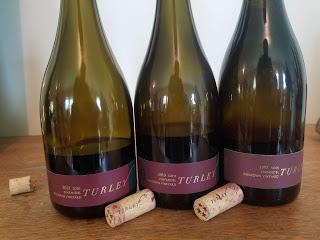
Turley Dogtown Zinfandel
Dogtown VineyardThe Dogtown Vineyard was planted own-rooted in 1944 and is located on the eastern side of Lodi within the Clements Hills AVA. The region is warmer and wetter with more clay and volcanic soils in contrast to the sandy Mokelumne River AVA. Turley took over management in 1997 which required the replanting of dead spots with vines grafted to St. George rootstock. And even these juvenile vines are head-trained like the original vineyard; this trellis system creates the gnarly look of each vine and limits yields. Dogtown is also dry-farmed because says Passalacqua "dry farmed vineyards produce superior wine" (2). All of Turley's wines are fermented using wild yeast as Passalacqua noted this "gives you more complex wines, with more terroir distinctions". During our visit with Tegan, he presented a vertical tasting of three Dogtown Zinfandels: the 1997, 2010, and 2013 Lodi Zinfandel Dogtown Vineyard. The 2013 showed noticeable leather and tea mixed with sour cherries and great acidity. Still a showoff. The 2010 had lower amounts of each characteristic but the wine's acidity still made it playful. Finally, the 1997, the first vintage after Turley took over the property's management, still shows the potential of the vineyard. The fruit is slightly waning but there are boosts of acid that keep the wine lively and not flabby.
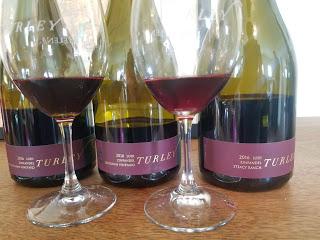
2016 Turley Zinfandel
Kirschenmann Vineyard & Steacy RanchThe Kirschenmann Vinyard hosts ancient vine Zinfandel as it was planted, own-rooted, back in 1915. Passalacqua owns and farms this vineyard which contains the ultra sandy soils of the east side of the Mokelumne River AVA. Tegan has also discovered that deeper sediment contains limestone - a most coveted soil type. Like Dogtown, the vineyard is dry farmed and head-trained, but unlike Dogtown, the vineyard receives a heavier dose of the delta breezes which help cool the grapes (3).
The Steacy Ranch is another ancient vineyard (1907) and located on the east side of the Mokelumne River AVA, but this is the oldest vineyard in Lodi planted on St. George rootstock. Like the rest it is dry-farmed and the soils contain slightly more gravel interspersed with the Mokelumne River sandy soil. The older vines are harvested together to form the Turley Lodi Zinfandel Steacy Ranch the whereas the younger vines are designated for the "Juvenile" program.
Tegan provided an opportunity for a horizontal tasting for 2016 across these two vineyards as well as the 2016 from Dogtown Vineyard. And each was distinct, representing the features of each vineyard. The 2016 Lodi Zinfandel Kirschenmann Vineyard ($39) was the lightest and brightest of the trio with bright, bright cherries. Passalacqua noted this was the most Pinot-ish of his Zinfandels. The 2016 Lodi Zinfandel Steacy Ranch ($30) was meatier in the classic east side Mokelumne River style. The wine was darker, firmer, zestier, with some black tea, but abundant acids. The 2016 Lodi Zinfandel Dogtown Vineyard ($44) was the biggest with solid tannins and funk but still finishing with bright acids. Of the three vineyards, the Dogtown has the smallest clusters and yields resulting in a dense wine. Cheers to Tegan Passalacqua and Turley Wine Cellars.
(1) Lodi’s oldest existing vines: the magical Bechthold Vineyard
(2) Why Turley is bonkers for Lodi
(3) Can Zinfandel be saved? Conversation with Turley's Tegan Passalacqua
